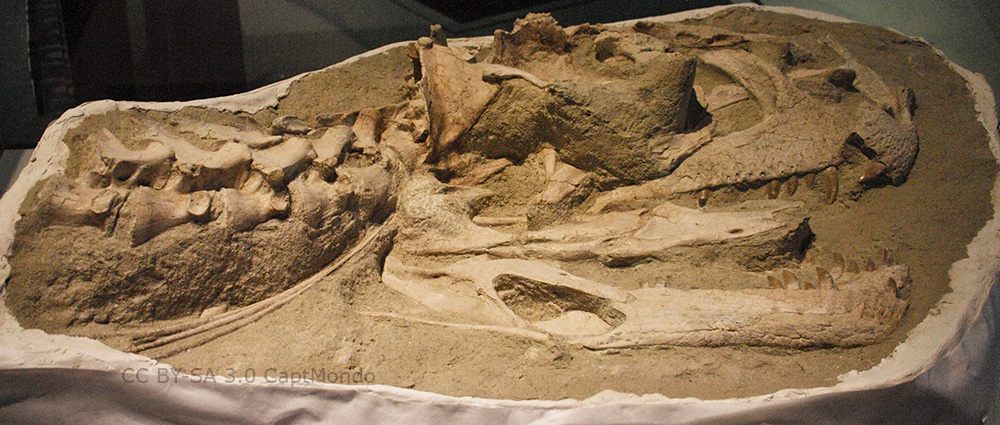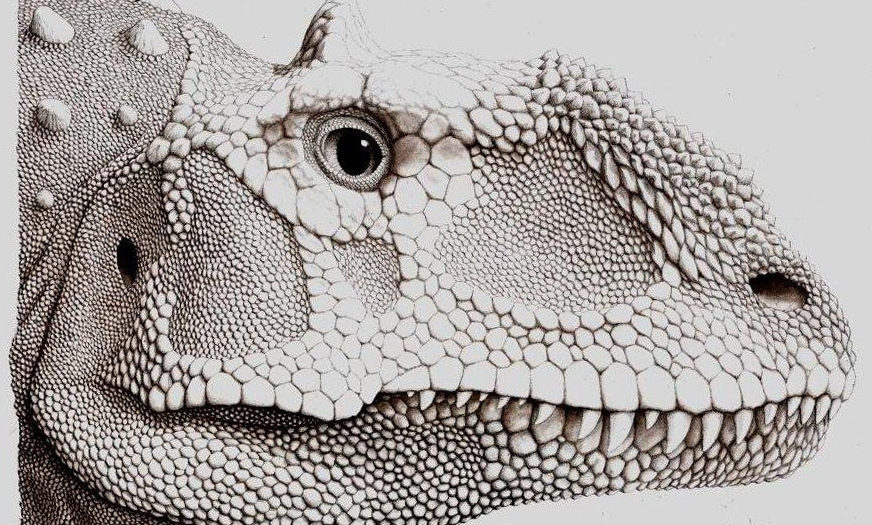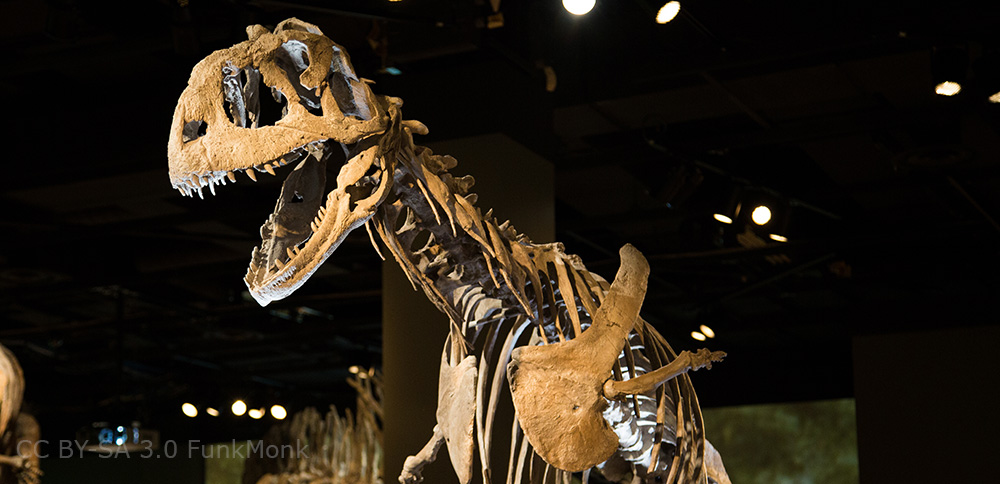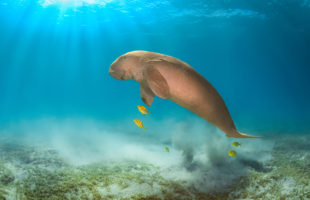In 2003, news of a dinosaur find in Madagascar went around the world: In an archaeological site about 30 km away from Mahajanga (French Majunga) in the west of the country, scientists had found the large, almost fully preserved skeleton of a flesh-eating dinosaur. Similar to the famous Tyrannosaurus rex, it was a dinosaur that walked on its feet with enormously short arms and a big, sharply teethed mouth. It reached lengths of six to eight meters and an estimated weight of a ton, whereby many bones were hollow or carved to reduce unnecessary weight. The fingers of the dinosaur were grown together and had claws only on two fingers per hand. The huge animal lived 66 to 70 million years ago, at the end of the Cretaceous period, and the skeleton is the only almost fully preserved find of its species. Almost one century before, in 1896, paleontologist Charles Depéret had found a toe, some claws, and vertebrae of the same dinosaur. In 2003, even a complete skull had been found. But no one was able to construct a complete skeleton since then. In the 1950ies, French scientist Lavocat gave the dinosaur its name, matching the place of the find: Majungasaurus crenatissimus.
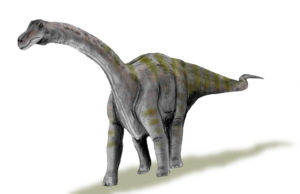
But not only the skeleton from 2003 was unique, but it also linked the dinosaurs of south Asia and South America to those of Madagascar. Presumably, Madagascar had been separated from the big continent Gondwana more than 85 million years ago and has never been connected with any other mainland since then. This offered a unique opportunity for plants and animals to develop completely independently from all other parts of the world. Despite this, the dinosaurs found in Madagascar were similar to species, that scientists only knew from India and Argentina. This might suggest that Madagascar might have been long linked to Gondwana than thought until then.
But Majungasaurus is not the only Malagasy dinosaur. In 1993, scientists founded the Mahajanga Basin Project. Close to Berivotra, a small shack village, there is the so-called Maevarano formation, where scientists have been finding evidence for many primeval animals again and again. Among these are often initial descriptions of new or extraordinary animals, such as Beelzebofus antinga, an extinct frog with up to five-kilo body weight. It is the heaviest extinct frog ever known. The project is sponsored by various international funds. The participating scientists are mostly from the University of Antananarivo and the Stony Brook University of New York.
Already two years after founding the project, scientists from State University (New York), the University of Antananarivo, and the Science Museum of Minnesota found a dinosaur skeleton besides numerous single bones. It was the almost complete skeleton of a young dinosaur and the skull of an adult from the species Rapetosaurus krausei. This 15 m long dinosaur moved on all fours, had a relatively small head on a very long neck, and exclusively fed on plants. Probably it was an item of prey for the much larger Majungasaurus. His find was a little sensation, too, because never before someone had found a nearly complete skeleton of a dinosaur from Titanosaurus family. In the same year, they moreover found the skeleton of an animal just 50 cm in length, which might be the missing link between birds and dinosaurs: Rahonavis ostromi weared feathers all over its body, but also had claws and a long skull, equipped with a lot of teeth like a Velociraptor. It lived in the late Cretaceous period, approximately 65 to 70 million years ago.
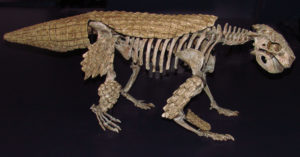
And the discoveries in Madagascar went on: In 1998, a Malagasy student found a very well preserved, almost complete skeleton of a small crocodile-like dinosaur. But the animal had a too strange appearance to be a crocodile: It was less than 80 cm long, had a short, broad head, and a relatively short tail. Sinosuchus clarki furthermore was equipped with teeth made to graze greens and bone plates beneath the skin, great protection from predators. And it was not the only crocodile-like dinosaur from Madagascar: Araripesuchus tsangatsangana looked very similar to today’s crocodiles but was much more long-legged. This is the reason for its name: Mitsangatsangana is the Malagasy term for taking a walk. A dinosaur the most similar to recent crocodiles was Mahajangasuchus insignis.
In 1998, the local team furthermore founded Madagascar Ankizy Fund, which provides health care, basic supply, and education mainly for local Malagasy children. Achievements until now include five primary schools, many wells, and cooperation with hospitals in the USA. This way the people around Berivotra benefit directly from the archaeological excavations.
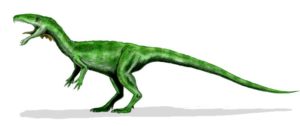
In 2001, the description of another dinosaur found near Mahajanga was published: With less than two meters in length, Masiakasaurus was not a giant. Together with findings from 2011, scientists could recreate about 65% of the skeleton. And Masiakasaurus knoepfleri was special, at least what concerned its teeth: The teeth at the very front were directed forward, so the dinosaur could downright skew small prey. By the way, the name knopfleri traces back to the lead singer of Dire Straits. You see, scientists may be humorous, too – while they had the most successfull findings, music of the Dire Straits was in the background.
Unfortunately, the archaeological sites of the Mahajanga Basin Project are not open to the public. The skeletons of the dinosaurs have been shipped to the Museum of Natural History in Paris, France. Nevertheless, there remains a lot to discover in Madagascar, and there might be many more dinosaurs waiting for their discovery in the red soil of the red island.
 MADAMAGAZINE Your Magazine about Madagascar
MADAMAGAZINE Your Magazine about Madagascar
